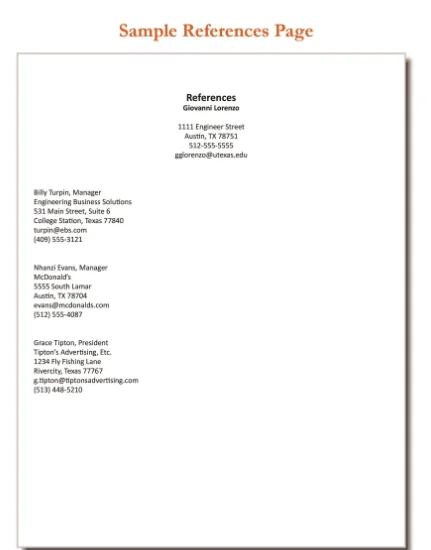Business Essay Format: 5 steps How to write a Business Essay

Writing a business essay requires a structured approach to address complex topics effectively. This guide will outline the five essential steps to craft a successful business essay.
We will provide you with a comprehensive roadmap to ensure your essay is well-researched, logically organized, and persuasively written.
As you follow these steps, you will be equipped to confidently tackle business essays, presenting your ideas clearly and concisely to engage and inform your readers effectively.
What is a Business Essay?
A business essay is a written academic or professional composition that explores and analyzes various aspects of the business world.

It serves as a platform for individuals, whether students or professionals, to express their insights, perspectives, and findings on business-related topics.
Business essays cover various subjects, including management, marketing, finance, entrepreneurship, economics, etc.
These essays aim to inform, persuade, or argue by presenting well-researched information, data, and evidence in a structured and coherent manner.
They often require critical thinking, analysis, and the application of relevant theories and concepts to real-world business scenarios.
Depending on the specific assignment or purpose, business essays may be reports, case studies, argumentative essays, or research papers.
Whether addressing issues in corporate strategy, market trends, ethical dilemmas, or financial analysis, business essays provide a valuable platform for individuals to engage with and contribute to the ever-evolving business world.
How to Format a Business Essay
Formatting a business essay is essential to presenting your ideas logically and professionally.
Proper formatting enhances readability, organizes thoughts, and adheres to academic or professional standards. Here are the critical steps to formatting a business essay effectively:
1. Title Page
Begin with a title page that includes the essay’s title, your name, the course name, the instructor’s name, and the submission date. Follow any specific formatting guidelines provided by your institution.
2. Introduction
Start with a clear and concise introduction that presents the essay’s topic and purpose. Provide background information and context to orient readers. Include a thesis statement that outlines the central argument or research question.
3. Body Paragraphs
Organize your essay into well-structured paragraphs, each addressing a single point or aspect of your argument. Begin each paragraph with a topic sentence that introduces the main idea.
Support your arguments with evidence, data, examples, and citations from credible sources.
Ensure a logical flow by using transitional phrases and explicit connections between paragraphs.
4. Headings and Subheadings
Use headings and subheadings to break down the content into sections. This aids in clarity and helps readers navigate your essay. Follow a consistent formatting style (e.g., APA, MLA, and Chicago) for headings.
5. Citations and References
Properly cite all sources used in your essay. Follow a specific citation style (e.g., APA, MLA, or Harvard) as required. Create a reference or bibliography page that lists all the sources you cited in the appropriate format.
6. Charts, Graphs, and Tables
If you include visual aids like charts, graphs, or tables, ensure they are labeled, numbered, and referred to in the text. Explain the significance of these visuals in the body of your essay.
7. Conclusion
Summarize the key points made in your essay without introducing new information.
Reiterate the thesis statement and the main arguments. Offer insights, implications, or recommendations based on your analysis.
8. References Page

List all the sources you cited in your essay in a separate references page. Format the references according to the chosen citation style.
9. Formatting Style
Adhere to the formatting style specified by your instructor or publication guidelines (e.g., APA, MLA, Chicago).
Attention to font size, margins, line spacing, and page numbering.
10. Proofreading and Editing
Carefully proofread and edit your essay for grammar, spelling, punctuation, and clarity.
Check for consistency in formatting, citation style, and headings.
Appendices (if necessary): Include appendices for supplementary material that don’t fit within the main body of the essay, such as detailed data, calculations, or additional information.
Word Count: Keep your essay within the specified word count limit. Avoid unnecessary repetition or verbosity.
11. Title and Page Numbers
Provide a descriptive title for your essay. Include page numbers, typically in the header or footer, for easy reference.
By following these steps and adhering to the required formatting style, you can create a well-organized and professionally presented business essay that effectively communicates your ideas and analysis to your intended audience.
5 Steps to Write a Good Business Essay
Writing a sound business essay requires careful planning, research, and organization. Whether you’re a student or a professional writer or even an MBA writer, these five steps will guide you in crafting an effective and persuasive business essay:
Understanding the Assignment
Understanding the assignment is the foundational step in writing a successful business essay. To begin, carefully read and dissect the assignment prompt or guidelines your instructor or organization provided.
Pay close attention to the specific requirements, such as the essay’s purpose, scope, and any formatting styles or citation guidelines that must be followed.
Next, identify key elements within the assignment, including the main topic or subject matter, the intended audience, and the expected outcome or goal of the essay. This step is crucial because it sets the direction for your research and writing process.
If you have any uncertainties or require clarification, don’t hesitate to seek guidance from your instructor.
When you understand the assignment clearly, you can tailor your research, structure, and content to meet the defined objectives, ensuring that your business essay addresses the specific requirements and resonates effectively with your target audience.
Research and Gathering Information
Once you’ve grasped the assignment’s requirements, the next critical step in crafting a compelling business essay is conducting thorough research and gathering information.

Again, this phase is the backbone of your paper, as it forms the basis for your arguments, insights, and analysis.
Start by exploring a variety of reputable sources, such as academic databases, books, scholarly journals, reports, and credible websites related to your chosen business topic.
Take meticulous notes, capturing essential data, key concepts, relevant quotes, and the sources’ publication details.
During the research process, maintain a critical eye, assessing the quality and reliability of the information you encounter—cross-reference information from multiple sources to ensure accuracy and objectivity.
Keep a detailed record of your sources; you’ll need this information for citations and references later.
Comprehensive research provides the insights and evidence necessary to support your arguments effectively, making your business essay well-informed and persuasive.
Planning and Outlining
Planning and outlining are pivotal in creating a well-structured and coherent business essay. Once you’ve gathered your research materials, it’s time to organize your thoughts and ideas systematically.
Begin by developing a clear and logical outline for your essay. This outline serves as a roadmap that guides your writing process and ensures that your essay flows smoothly. It typically consists of:
- Introduction: Outline the purpose and context of your essay, and include your thesis statement—a concise summary of your main argument or research question.
- Body Paragraphs: Break down your essay into multiple body paragraphs, each focusing on your argument’s critical point or aspect. Ensure logical order and precise transitions between paragraphs.
- Supporting Details: Under each body paragraph, outline the supporting evidence, data, or examples you will use to substantiate your argument.
- Conclusion: Summarize the main points of your essay and restate your thesis, offering insights or recommendations based on your analysis.
A well-structured outline helps you maintain focus, prevent redundancy, and organize your essay cohesively. It serves as a solid foundation for building a compelling and logically flowing business essay.
Writing the Essay
Begin with a captivating introduction that provides context and introduces the essay’s topic. Include a thesis statement that outlines your main argument or research question.
Each body paragraph should focus on your argument’s single point or aspect. Start with a clear topic sentence that introduces the paragraph’s main idea.
Provide evidence, examples, and data to support your argument. Cite your sources correctly. Use transitional phrases to maintain coherence and connect ideas between paragraphs.
Summarize the main points made in the essay without introducing new information. Restate the thesis statement and highlight the significance of your findings. Offer insights, implications, or recommendations based on your analysis.
Editing and Proofreading

Editing and proofreading are indispensable final steps in crafting a polished and effective business essay. After you’ve written your initial draft, reviewing and refining your work for clarity, correctness, and coherence is crucial.
Start by revisiting your essay’s overall structure and organization. Ensure that your ideas flow logically from one paragraph to the next and that your arguments are well-supported with evidence.
Check for grammar, spelling, and punctuation errors, and make necessary corrections.
Pay close attention to the consistency of your writing style, formatting, and citation throughout the essay, adhering to the specific guidelines provided by your institution or instructor.
Proofreading should involve a meticulous examination of your work, preferably after taking a break to gain a fresh perspective. You may feel inadequate to work on your work, you may consider a qualified MBA editor or a general essay editor to assist you.
Additionally, seek feedback from peers or mentors to gain valuable insights and suggestions for improvement.
A well-edited, error-free business essay demonstrates professionalism and enhances your credibility as a writer and researcher.

Josh Jasen or JJ as we fondly call him, is a senior academic editor at Grade Bees in charge of the writing department. When not managing complex essays and academic writing tasks, Josh is busy advising students on how to pass assignments. In his spare time, he loves playing football or walking with his dog around the park.




